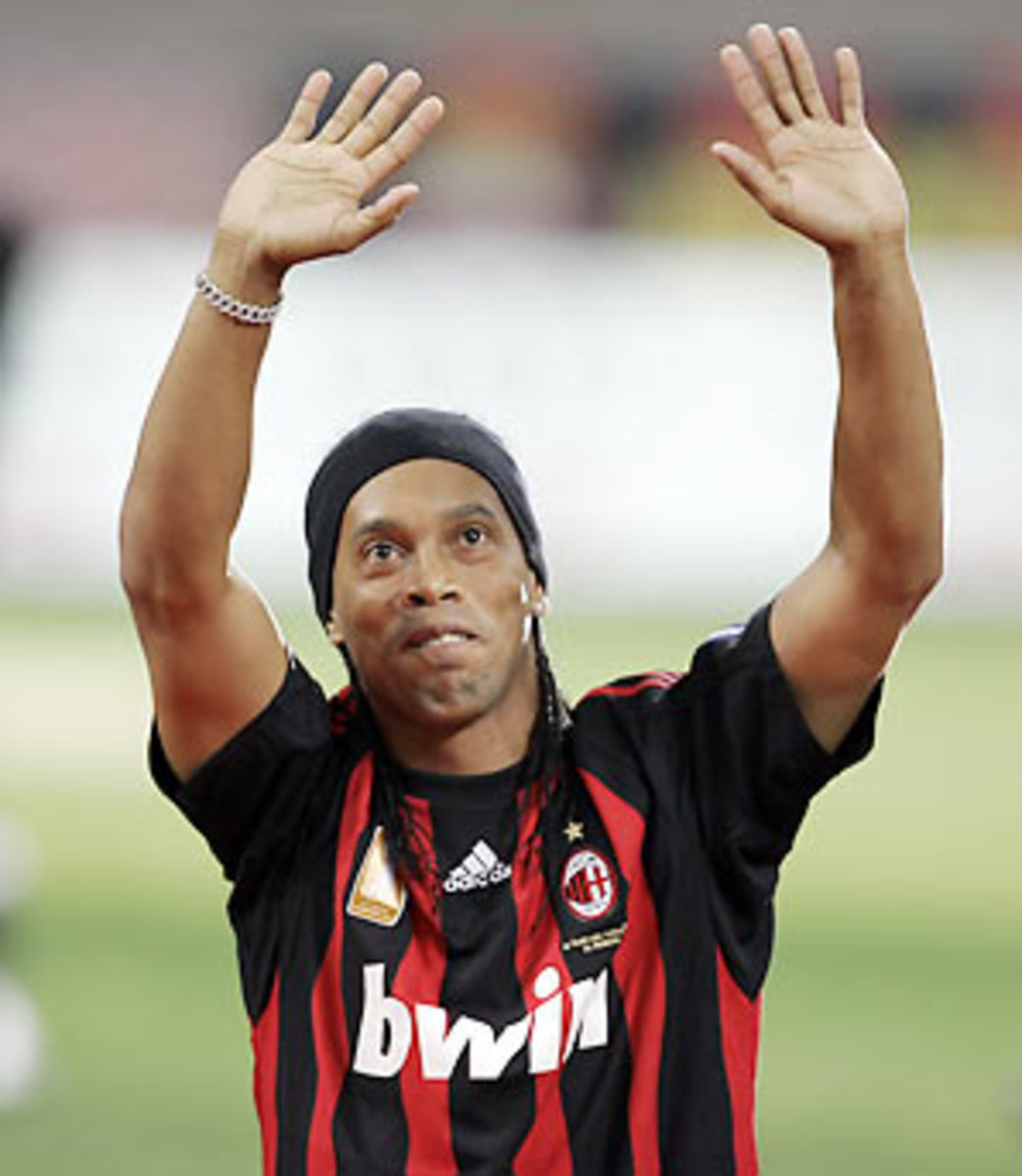
Debating valuable commodities
My last column on the valuations of Ronaldinho and Cristiano Ronaldo seemed to get a lot of people's panties in a twist. I got twice the usual haul of correspondence, some of it articulate, some of it abusive, some of it downright bizarre.
Amar points out that I have underestimated Ronaldo's potential commercial impact on Real Madrid. "[David] Beckham played at Madrid for four years and generated more than $350 million for the club," he writes. "So I believe that a player like Ronaldo, who in my opinion is a much better player than Beckham and is still interested in the flashier side of football, should be able to generate more than $10 million."
First of all, I know the $350 million figure has been quoted before, but I simply don't believe it. Clubs are very good at coming up with creative accounting shenanigans to justify their investments. Obviously Beckham had a big impact, although, of course, that was tempered by the fact that he owned 50 percent of his image rights while at the Bernabéu. But I think that number is simply wrong. And in terms of commercial potential, Ronaldo is light years from Beckham.
Matt Mathai of Annapolis, Md., conjures up the old chestnut: "There is no 'right' price. There's only the price someone is willing to pay. By definition, that's the right price. Only after the fact can you make the judgment about whether or not it was too high based upon production."
Really? Obviously hindsight is 20-20, but does this mean that we shouldn't have an opinion about whether someone is over or undervalued? Clubs look for bargains all the time. They place valuations on players all the time. It doesn't mean that just because they're willing to pay a certain amount, that's how much they should be paying.
Mike Maruska of Portland, Ore., argues that Sevilla and Arsenal do, in fact, use similar techniques to those outlined in Moneyball to identify undervalued talent and that's how they compete with the big boys: "Since baseball is a linear sport, it's a lot easier to use statistics to find these undervalued players, but the overall idea is the same for any sport or business: Find a bargain and exploit it."
Precisely. Which is what I was trying to assess with Ronaldo and Ronaldinho: are they -- hypothetically -- bargains?
Hubert Barnes of Pembroke Pines, Fla., asks: "Are you fore real? The positive marginal financial impact these moves have on the clubs is huge. These are established players of the year who have demonstrated their value to the sport and to their respective clubs. They are in demand."
Yes and no. Apart from Milan and Manchester City, clubs weren't exactly beating down Barcelona's door for Ronaldinho. He may be established, but he's coming off 18 months of underachievement. As for Ronaldo, last season was his first truly dominant campaign. Yes, he's young and he has a massive upside. But that's all it is right now. As for this "huge" positive marginal influence, I'd love to see some cold hard numbers.
Richard of Davis, Calif., seems to have a worrying degree of faith in clubs' ability to evaluate investments: "Be assured that they have done more due diligence than you have," he says. "Signing the big stars is inherent in the synergistic effect of maintaining the clubs' prestige."
Having met many of these people who approve these enormous transfer fees, I can tell you that you're mistaken in terms of "due diligence." In the summer of 2006, AC Milan had a $27 million bid for Ronaldo (not Cristiano, the Brazilian one, the original Phenomenon) turned down by Real Madrid. Six months later, Milan offered $10 million and Real accepted. So much for "due diligence."
Finally, Adam M. points out that Milan had an opportunity cost in its investment for Ronaldinho: "It isn't as if Milan was going to spend $40 million on Ronny or nothing," he writes. "So Ronny's real 'cost' is the difference [between his price and that of another player Milan would have bought], not the full amount."
That may be true, but it's true in almost every case. Milan sold Alberto Gilardino to Fiorentina; technically, you could say that Ronaldinho is replacing him. So you could argue that if you put the $23 million Milan received for Gilardino towards Ronaldinho's transfer fee, he actually becomes cheaper.
But so what? Milan could have not bought Ronaldinho and played Kaká and Alexandre Pato up front (with Pippo Inzaghi and Alberto Paloschi off the bench). That would have cost nothing. How much worse would Milan have been? Would it have been worth the de facto $23 million profit? And what would the longer-term implications have been? That's a matter of debate.
Or Milan could have chosen a player with an entirely different profile from Ronaldinho's: say Emannuel Adebayor or Didier Drogba. I don't think you necessarily need to look at how much an alternative player would have cost to evaluate a transfer fee.





